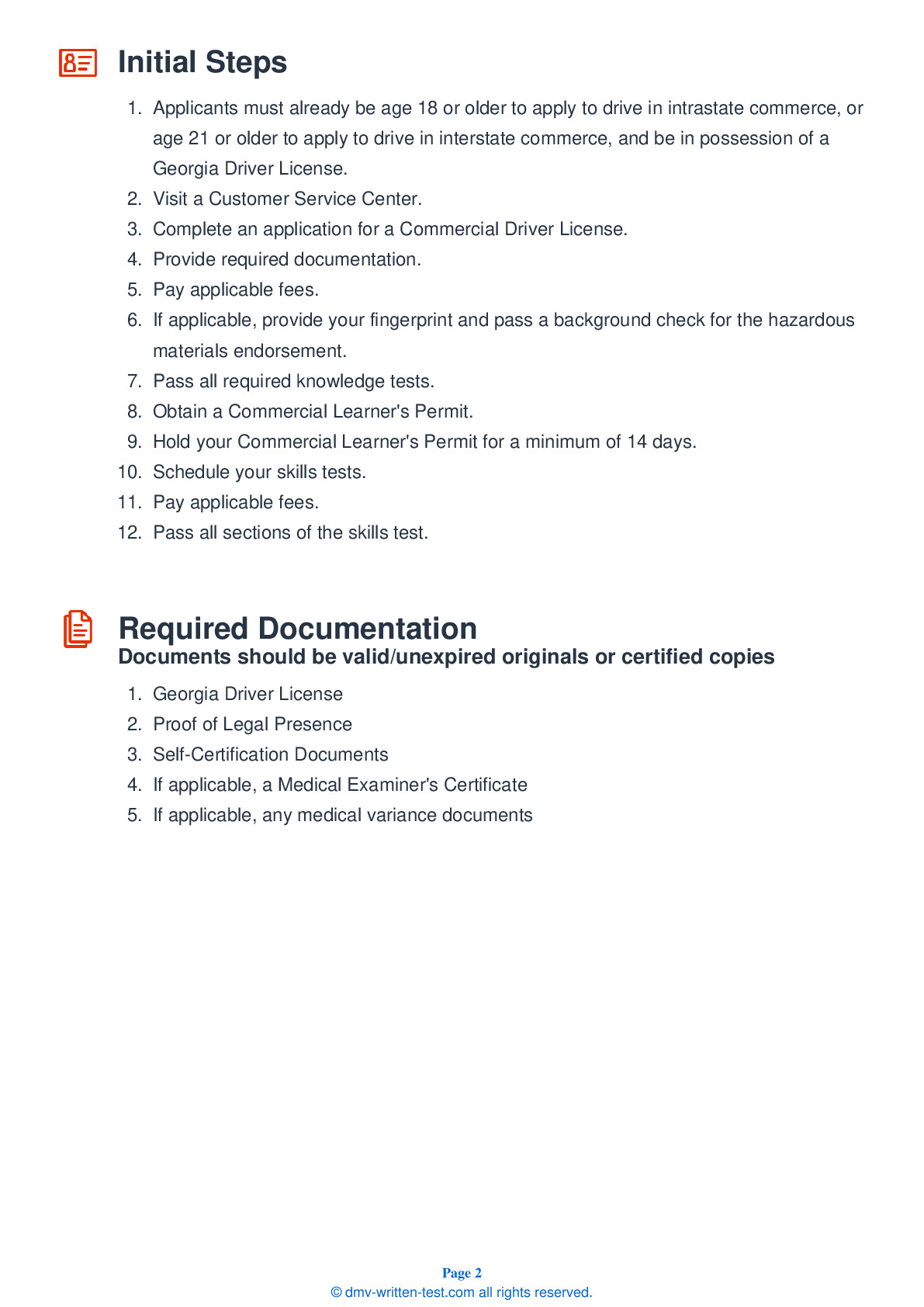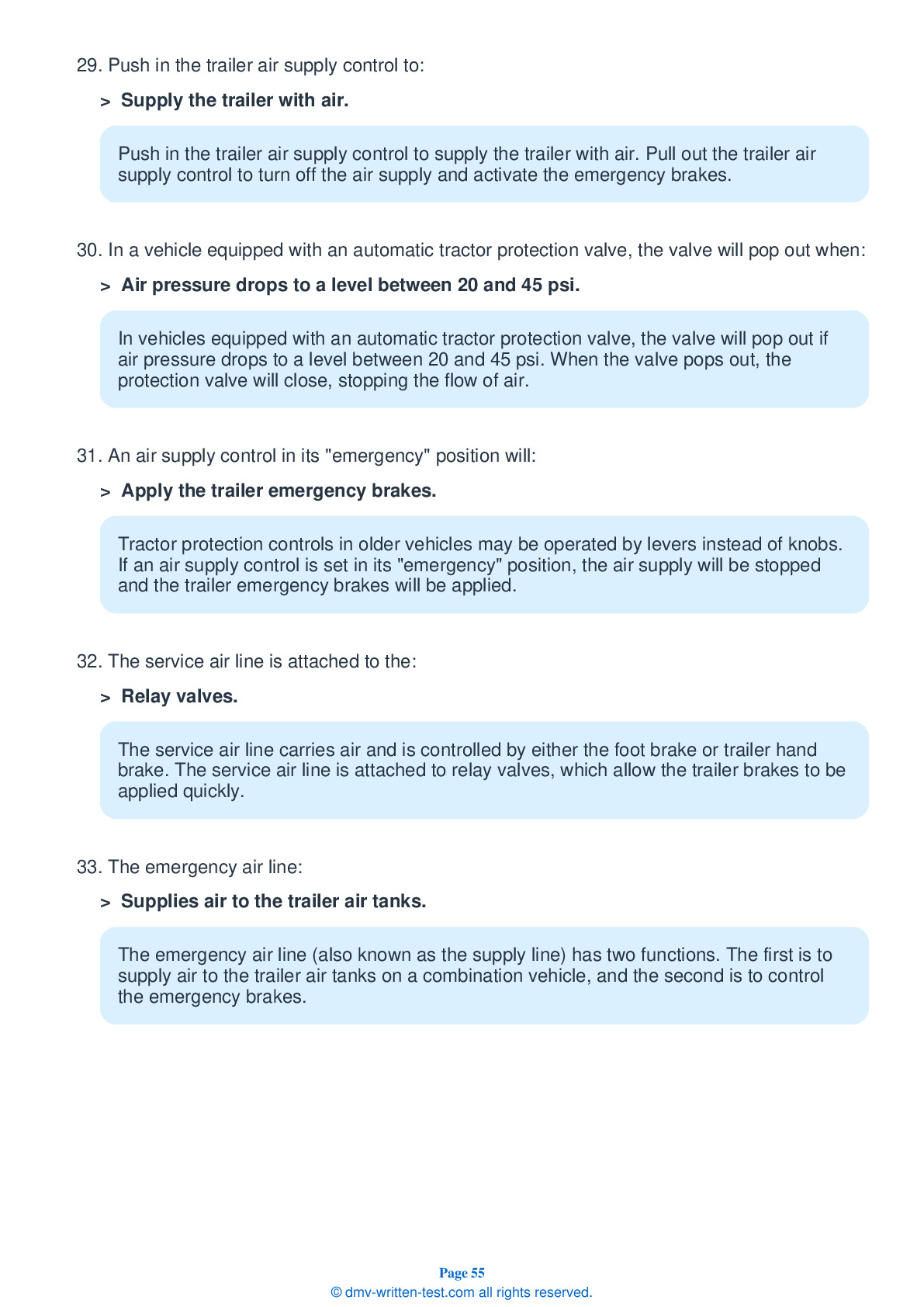Combination
All applicants who are applying for a Class A CDL should be prepared to take the Combination test. This test covers information found in Section 6 of the Commercial Driver License Manual. Section 6 provides the information needed to safely operate tractor-trailers, doubles, triples, and straight trucks with trailers. The test is made up of 20 multiple-choice questions, and applicants will need to correctly answer a minimum of 16 questions to pass. The Combination test is not a replacement for the Double/Triple endorsement test.
Number of Question
Passing Score
8. When backing a trailer, how should you turn the steering wheel?
Explanation
When backing with a trailer, turn the top of the steering wheel in the direction opposite of where you want to go. Once the trailer begins turning, you should then switch the direction of the steering wheel to follow the trailer.
9. Proper coupling technique:
Explanation
Knowing proper coupling and uncoupling technique is fundamental to the safe operation of combination vehicles. Improper coupling can be very dangerous.
10. Simply changing lanes can cause:
Explanation
Due to the "crack-the-whip" effect caused by rearward amplification, changing lanes too quickly in a combination vehicle can result in a rollover.
11. Fully-loaded rigs:
Explanation
Because the weight of cargo gives them a higher center of gravity, fully-loaded rigs are 10 times more likely to roll over in a crash than empty rigs.
12. Rollovers are most likely to happen when:
Explanation
Rollovers happen when an operator turns too fast. Drivers should be sure to slow down before entering turns and curves, especially when transporting a fully-loaded rig.
13. An air supply control lever should be in its "normal" position when you are:
Explanation
Tractor protection controls in older vehicles may be operated by levers instead of knobs. If an air supply control is set in its "normal" position, it is properly set for you to pull a trailer.
14. If you need to back your trailer but cannot back up in a straight path, you should:
Explanation




